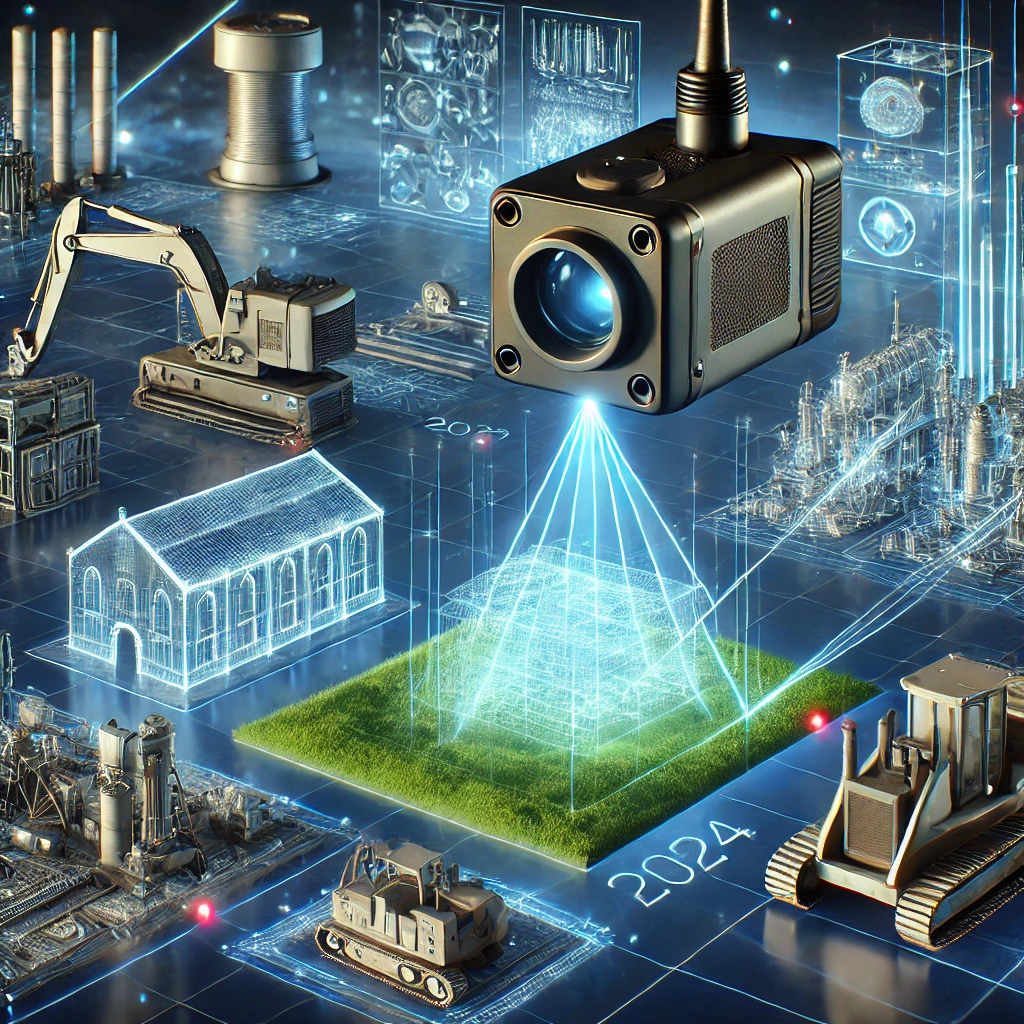Top AI Tools Transforming Civil Engineering in 2025
Discover how artificial intelligence is revolutionizing infrastructure planning, design, estimation, and construction with these cutting-edge tools
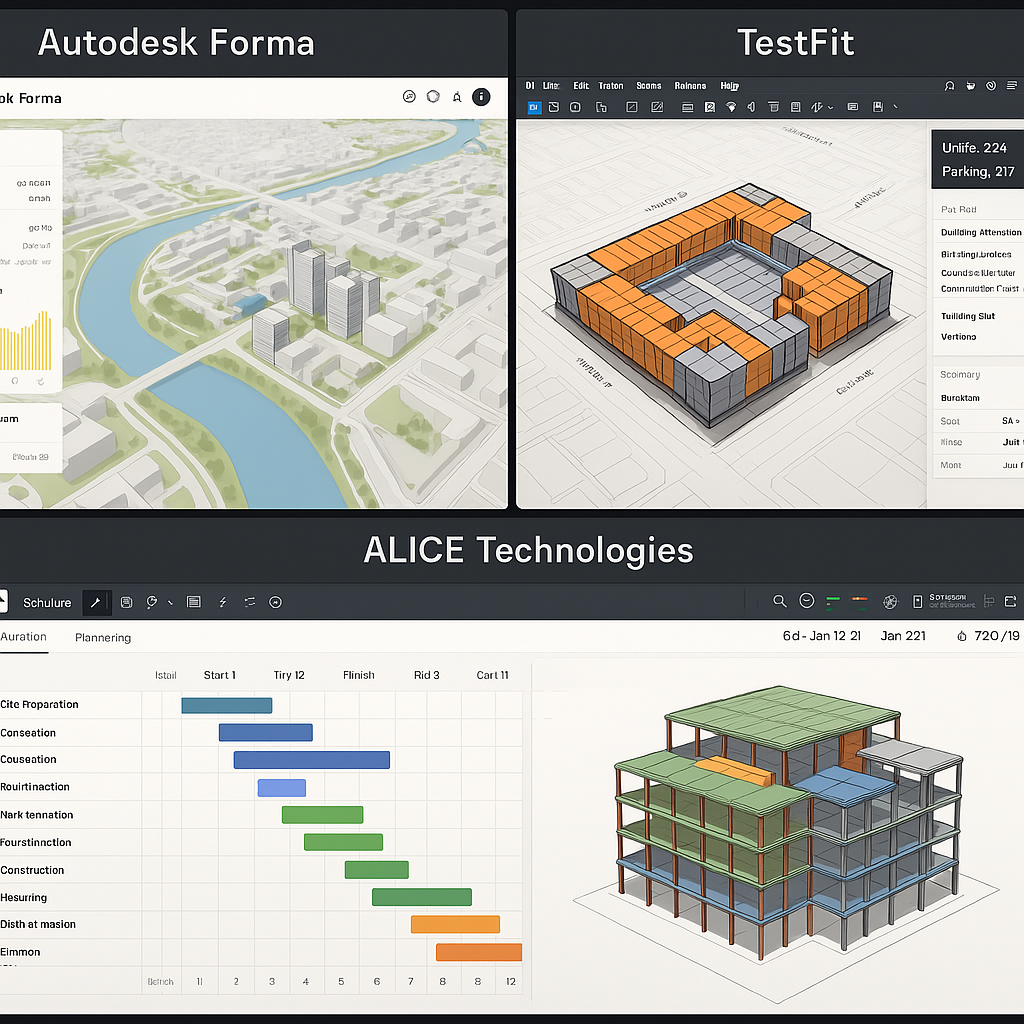
Table of Contents
Artificial Intelligence (AI) is transforming civil engineering faster than ever before. In 2025, engineers are witnessing a radical shift in how infrastructure is planned, designed, estimated, and executed. AI-powered civil engineering tools are making workflows more efficient, reducing errors, and enabling smart decision-making that was once impossible with conventional software. From real-time design optimization to automated quantity takeoffs and intelligent scheduling, civil engineers now have a powerful arsenal of digital allies at their fingertips.
🔍 Why AI Matters in Civil Engineering
Before diving into specific tools, it's important to understand why AI adoption in civil engineering is becoming so essential. The challenges faced by civil engineers—tight deadlines, rising costs, labor shortages, climate resilience, and sustainability goals—require smarter, faster, and more adaptive solutions.
AI helps civil engineers by:
- Automating repetitive tasks like drafting, scheduling, and quantity takeoffs
- Predicting risks, delays, and cost overruns before they occur
- Optimizing structural and architectural design in real-time
- Enhancing collaboration across multidisciplinary teams
- Learning from past projects to improve future infrastructure outcomes
These benefits are reshaping how engineers plan and deliver infrastructure—whether it's roads, bridges, buildings, or water systems. According to a 2024 McKinsey report, civil engineering firms implementing AI tools are seeing an average of 27% increase in project delivery efficiency and 18% reduction in overall costs.
🏗️ 1. Smart Design: AI-Driven Planning and Modeling
Design is the foundation of any civil engineering project. AI-powered design tools are enhancing the process through generative design, machine learning models, and automated clash detection. Let's examine the leading AI design software revolutionizing civil engineering in 2025.
a. Autodesk Forma (Previously Spacemaker AI)
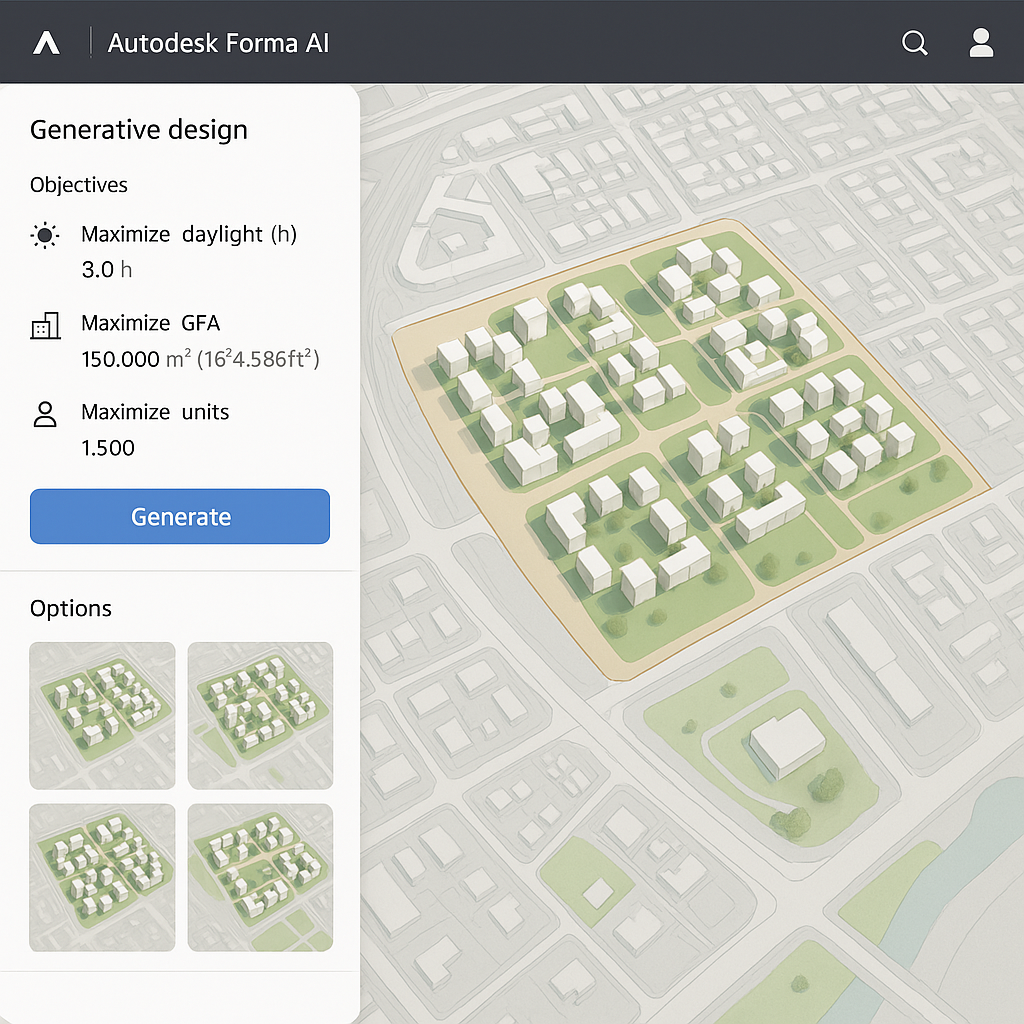
Autodesk Forma has become a popular AI design tool for architects and civil engineers working on urban planning and site design. It allows professionals to explore multiple design options by inputting constraints like site conditions, building codes, wind patterns, and solar access. The AI then proposes optimal layouts that maximize efficiency and sustainability.
Key Features:
- Generative site planning with constraint-based algorithms
- Environmental analysis (noise, sunlight, wind) using AI simulation
- Real-time feedback for zoning compliance and regulations
- Seamless integration with Revit and BIM workflows for complete project continuity
b. TestFit
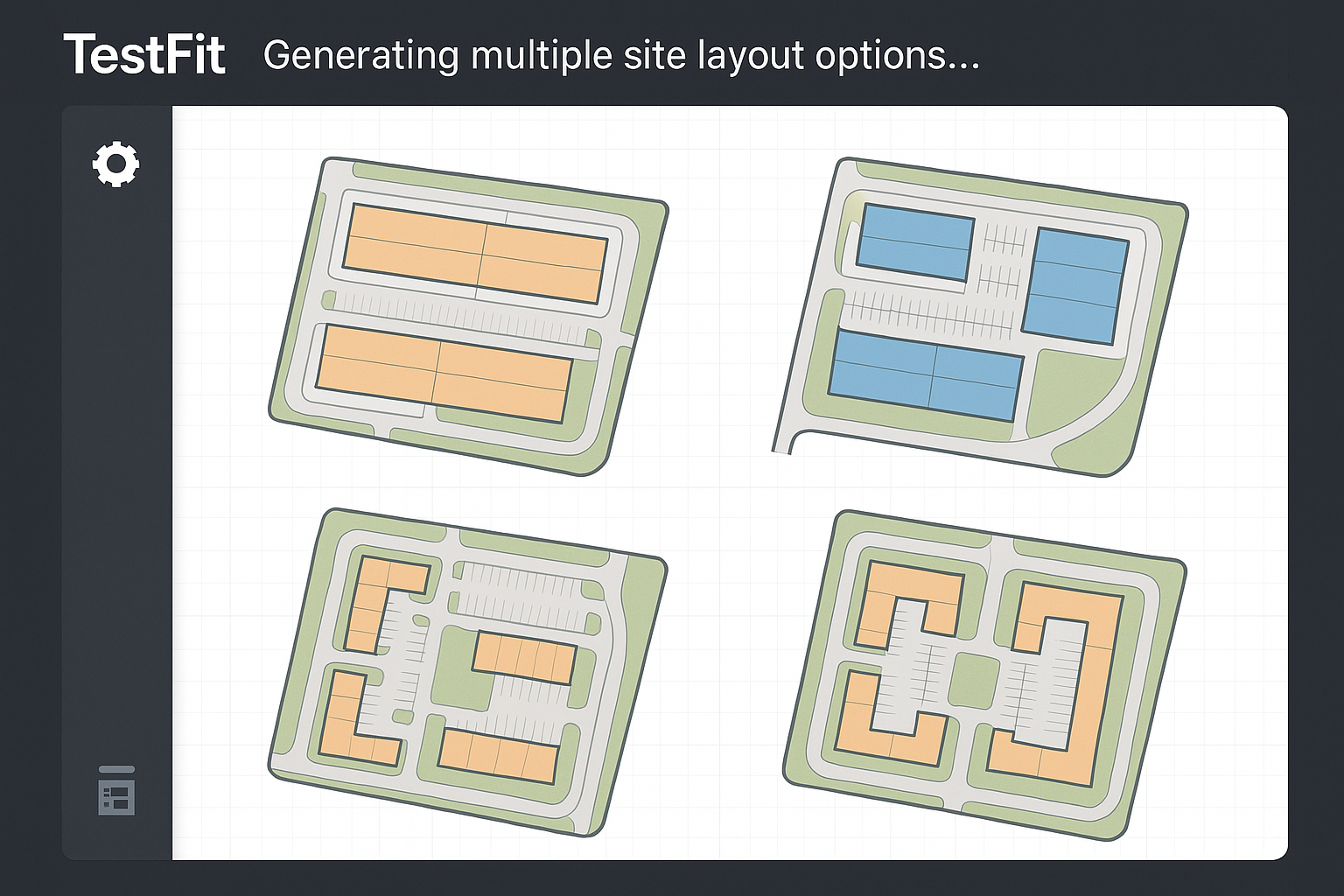
TestFit uses AI to automate feasibility studies for real estate and urban infrastructure. With just a few clicks, engineers can model hundreds of site layout options for buildings, roads, and parking lots. It's especially useful during the conceptual phase of a project when rapid iteration is crucial.
Benefits:
- Saves weeks of manual drafting through AI-generated alternatives
- Optimizes building footprints based on multiple parameters
- Analyzes cost, density, and land use with predictive algorithms
c. Autodesk Revit with AI Plugins
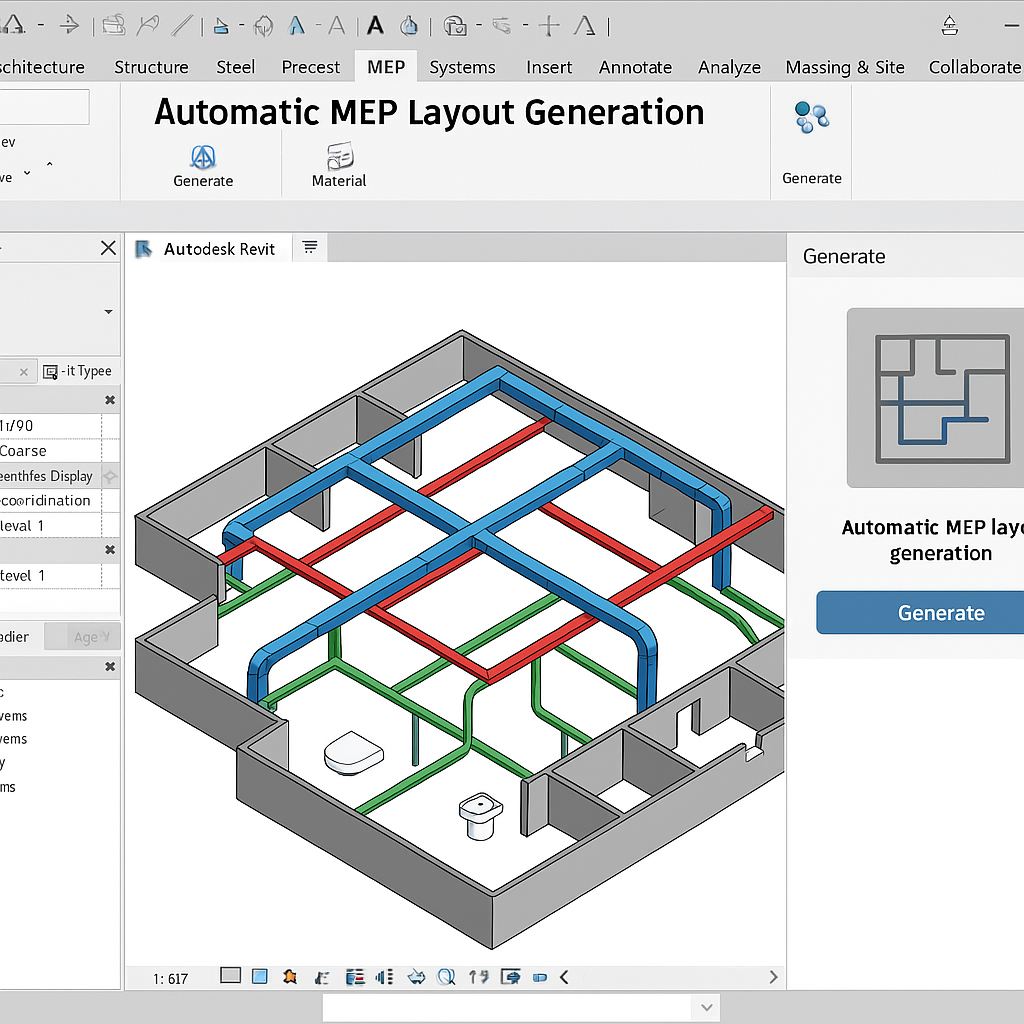
Revit has been the go-to BIM platform for years, and in 2025, it's supercharged with AI plugins like Veras and Hypar. These extensions use AI to generate design alternatives, automate documentation, and optimize structural elements for cost and sustainability.
AI-Enhanced Capabilities:
- Auto-generation of MEP layouts using machine learning algorithms
- Structural optimization based on material usage and loading conditions
- Clash detection and resolution using predictive analytics and historical data
Want to learn more about Building Information Modeling (BIM) in Civil Engineering? Read our guide on Building Information Modeling (BIM) in Civil Engineering: A Complete Guide to Tools, Benefits, and Challenges.
💰 2. Estimating: AI in Quantity Takeoff and Cost Prediction
Cost estimation has historically been labor-intensive and error-prone. But in 2025, AI estimation tools for civil engineering are taking center stage in quantity takeoff (QTO), bill of quantities (BoQ), and cost forecasting. These tools drastically cut down on manual work while increasing precision.
a. Togal.AI
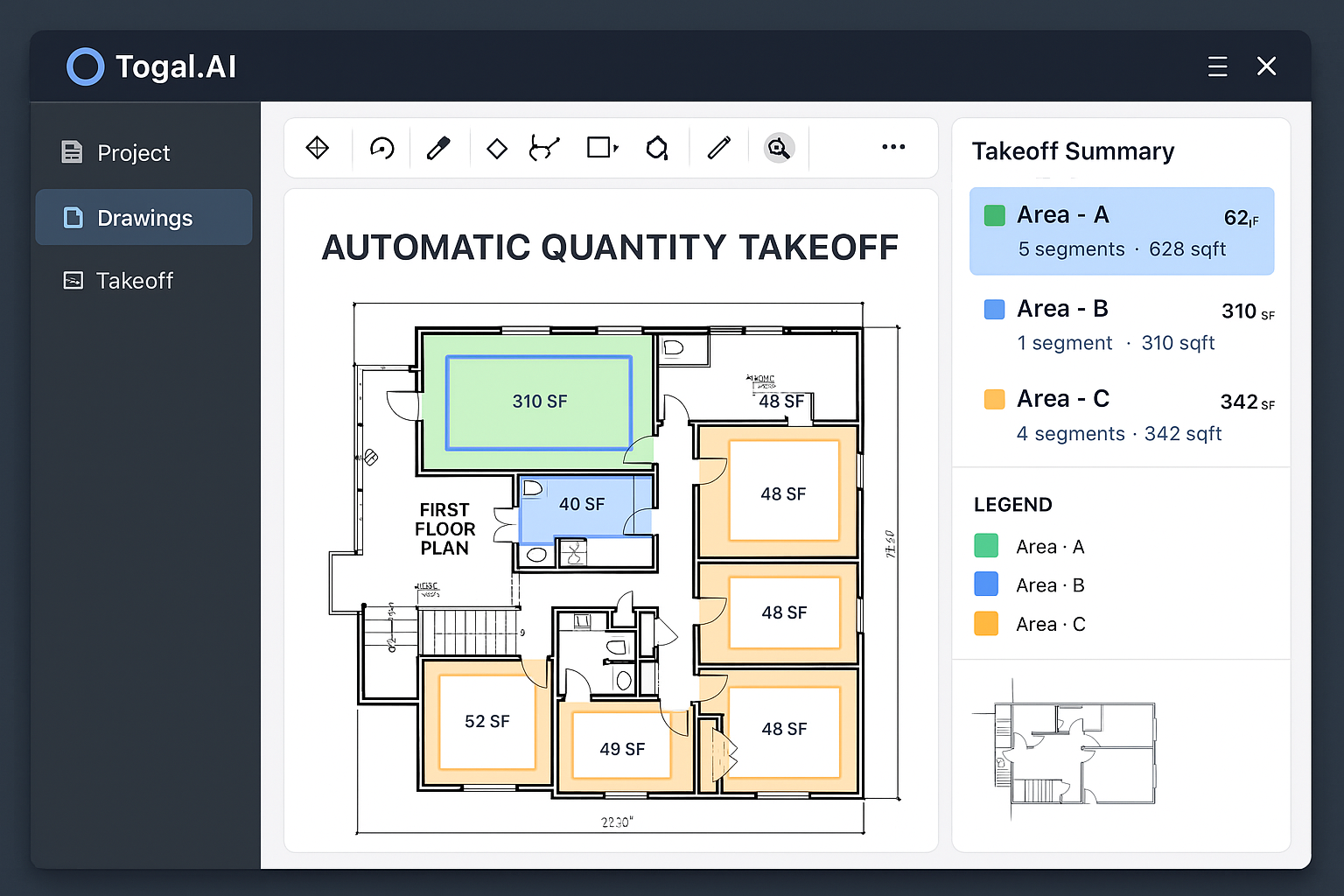
Togal.AI is a revolutionary takeoff tool that uses deep learning to interpret construction drawings and extract quantities automatically. It's trained on millions of plans, allowing it to recognize walls, doors, slabs, and more—even across different drawing styles and notations.
Use Cases:
- Instant quantity takeoffs from PDFs and CAD drawings
- Integration with estimating software like ProEst and Sage
- Cost mapping based on historical data and regional pricing
Togal.AI is especially valuable for contractors bidding on large-scale projects under time pressure, reducing takeoff time by up to 93% according to their case studies.
b. CostOS by Nomitech
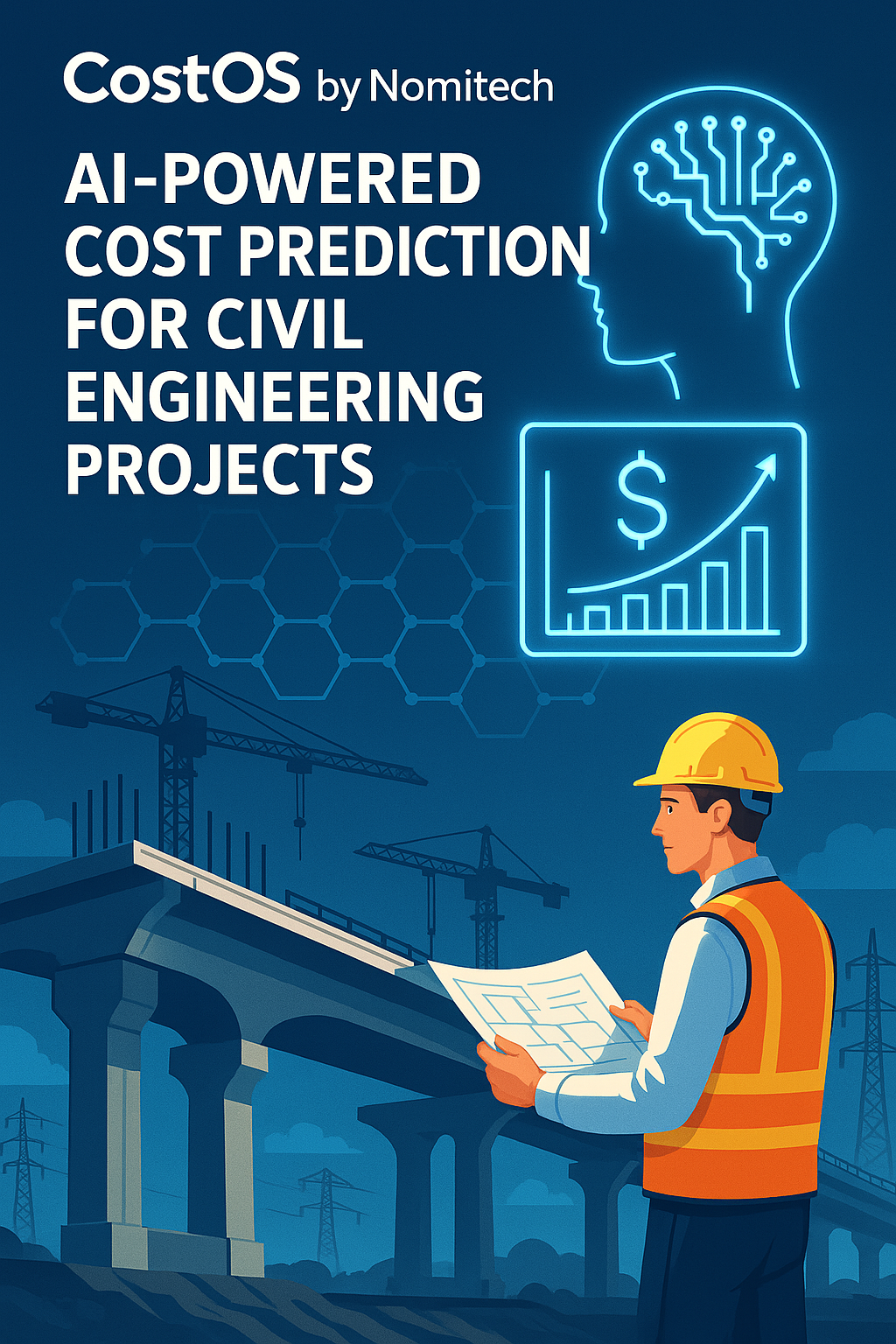
CostOS is a powerful AI-enabled estimating platform used by infrastructure developers worldwide. It blends 2D/3D takeoff capabilities with AI-driven cost prediction and risk analysis.
Highlights:
- BIM-based quantity extraction with automatic element recognition
- Machine learning models for cost forecasting with 95% accuracy
- Benchmarking against historical data from similar projects
In 2025, CostOS is being widely adopted in government-funded projects and international tenders due to its precision and traceability. The platform's AI can detect potential cost overruns before they occur.
c. Bricsys 24/7 with AI Add-ons
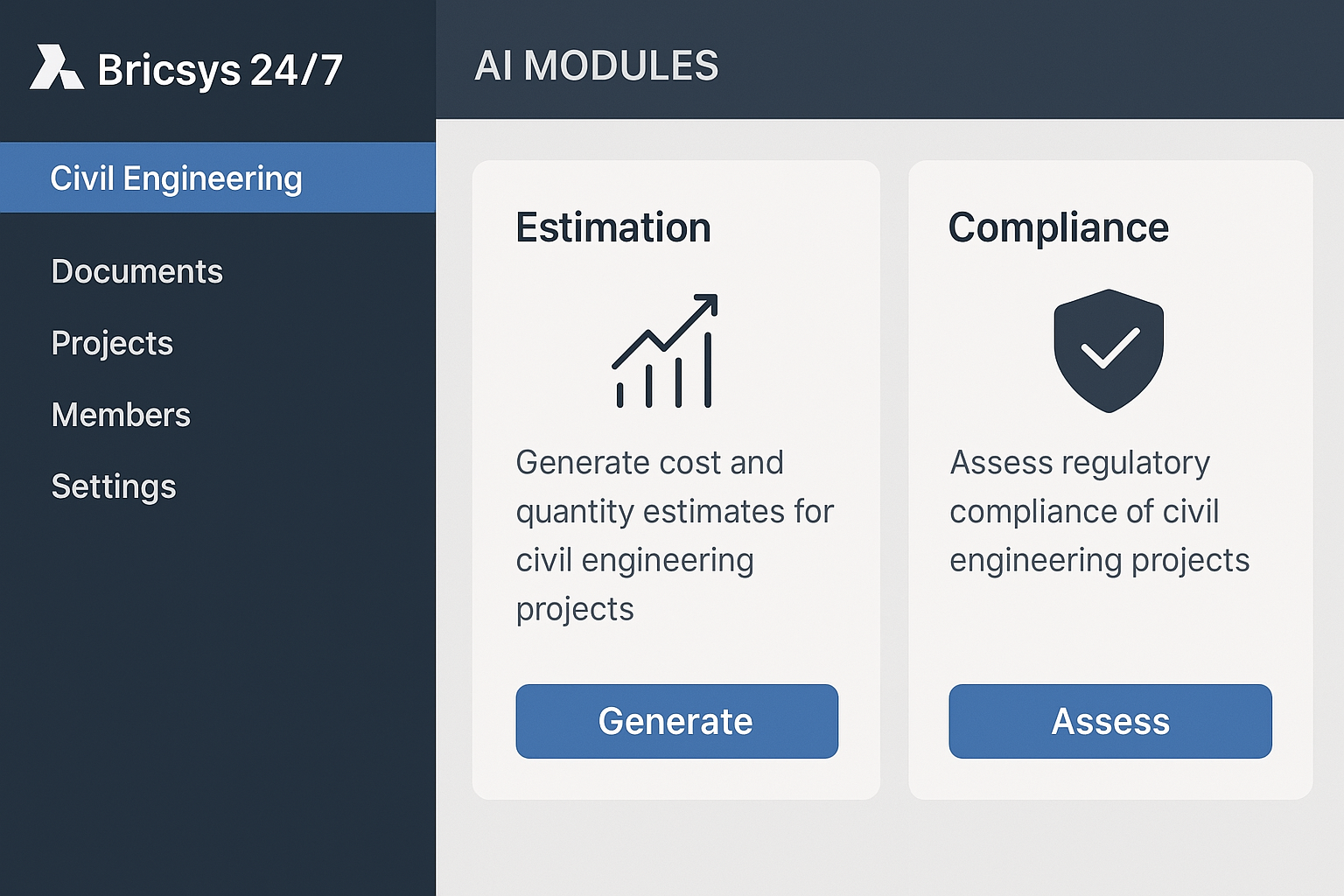
Bricsys 24/7 is not just a CDE (Common Data Environment) but also hosts AI-driven modules for estimating and compliance. Its AI can analyze multiple versions of drawings and automatically update BoQ documents when changes occur—ensuring real-time synchronization between design and budget throughout the project lifecycle.
📅 3. Scheduling: AI-Powered Project Management
Meeting deadlines is always a top priority in civil engineering. With hundreds of variables, from labor availability to weather changes, traditional scheduling tools like MS Project or Primavera often fall short. Enter AI scheduling tools for construction projects that are revolutionizing project management.
a. ALICE Technologies
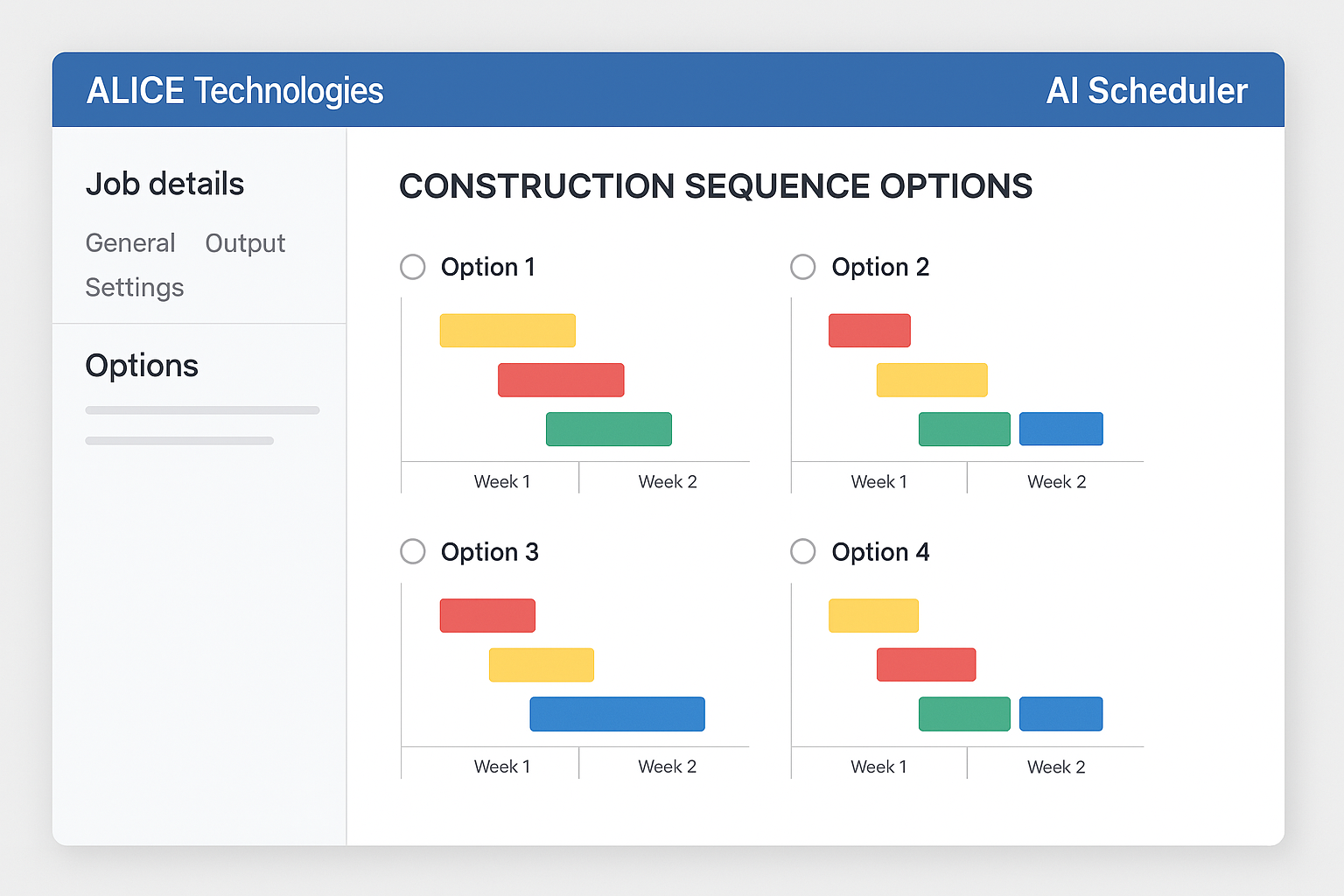
ALICE is a leading construction optioneering platform that uses AI to generate and evaluate thousands of construction schedule scenarios. It lets planners simulate different combinations of labor, equipment, and materials to find the most efficient path forward.
Key Strengths:
- AI-generated schedules based on project constraints and resource availability
- Real-time rescheduling when delays occur or conditions change
- Cost vs. time trade-off analysis with multiple optimization objectives
Used by companies like Parsons and Mortenson, ALICE is helping engineers build complex infrastructure on tight timelines while reducing scheduling conflicts by up to 37%.
b. nPlan
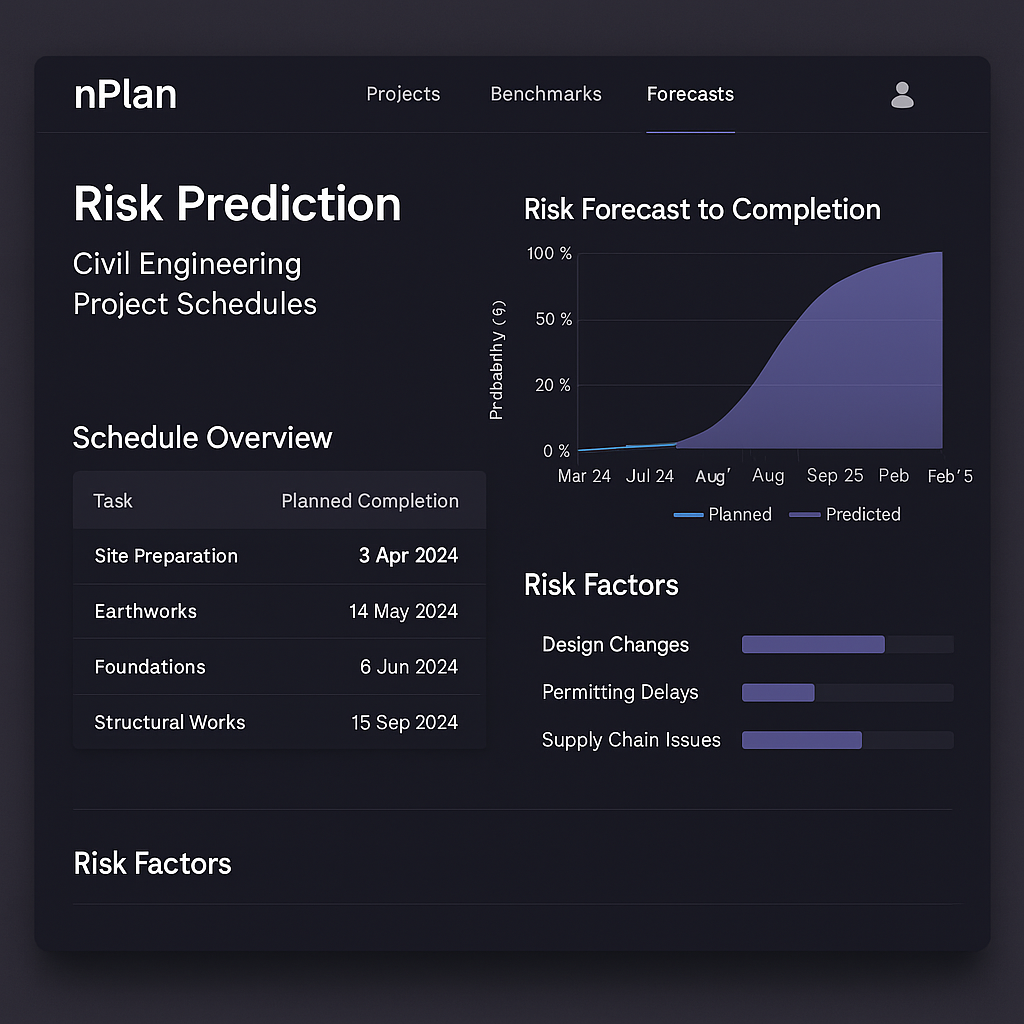
nPlan uses machine learning to analyze past project schedules and predict risks in new ones. It's particularly effective in identifying activities likely to cause bottlenecks or delays before they impact the critical path.
Advantages:
- Risk-based scheduling with probability calculations
- Early warning system for delays using predictive analytics
- Dashboard with probabilistic completion dates and risk visualizations
In 2025, nPlan is being adopted in megaprojects, including transportation corridors and energy infrastructure, where schedule reliability is paramount.
c. Buildots
Buildots combines AI with wearable cameras and BIM to track construction progress in real-time. Engineers wearing a 360° camera on site capture footage, which is analyzed by AI to compare actual progress with planned schedules.
Notable Features:
- Real-time progress tracking with visual AI recognition
- Automated reports and visual timelines updated daily
- Issue detection and resolution prompts with priority ranking
This tool enhances on-site decision-making and reduces the need for manual progress reporting, saving project managers up to 6 hours per week.
Challenges in Adopting AI in Civil Engineering
Despite the immense potential, there are still hurdles in adopting AI technology for civil engineers:
- Skill gap: Many professionals need upskilling to effectively use AI tools, with 67% of firms reporting a shortage of AI-proficient engineers.
- Cost of software: Advanced AI tools come with high subscription fees, ranging from $300-$5,000 per month depending on functionality.
- Data security: Cloud-based tools raise concerns about privacy and data protection, especially for sensitive infrastructure projects.
- Integration: Compatibility issues with existing systems can delay adoption and create fragmented workflows.
However, with increased awareness and affordable training resources, these challenges are gradually being overcome. Many software providers now offer tiered pricing for smaller firms and comprehensive onboarding programs.
Explore Civil Engineering Made Simple
Looking for clear tutorials, practical tools, and real-world insights in civil engineering?
CivInnovate is your go-to resource for students and professionals. From surveying basics to advanced construction tips, we’ve got you covered.
🚀 The Future Ahead: What's Next for AI in Civil Engineering?
The future of artificial intelligence in civil engineering is about context-aware intelligence. Based on current technology trends and industry research, in coming years we can expect:
- AI-integrated drones and robotics for automated surveying and inspection, reducing field work by up to 80%
- Digital twins that update in real-time with sensor data from IoT-equipped infrastructure
- Natural language interfaces, allowing engineers to interact with models via voice or text commands
- AI in sustainability analysis, helping projects meet green certification goals with optimized material usage
- Edge AI to process data directly on devices at job sites for faster decision-making, even in remote locations
These innovations will continue to push the boundaries of what's possible in civil engineering. According to a recent industry forecast, AI adoption in civil engineering is expected to grow by 35% annually through 2030.
Frequently Asked Questions About AI in Civil Engineering
How does AI improve accuracy in civil engineering projects?
AI improves accuracy in civil engineering by analyzing vast amounts of data to identify patterns and make predictions that humans might miss. Machine learning algorithms can detect inconsistencies in designs, predict structural behavior under various conditions, and optimize material usage to prevent waste. For quantity takeoffs, AI tools like Togal.AI reduce human error by automatically recognizing and measuring elements from drawings with precision exceeding 97%.
What is the ROI of implementing AI tools in civil engineering firms?
The ROI for AI implementation in civil engineering typically ranges from 150-400% within the first 18 months. Firms report time savings of 30-70% on repetitive tasks like quantity takeoffs and design iterations. For large projects, AI scheduling tools have demonstrated cost savings of 5-15% through optimized resource allocation and early risk detection. While initial implementation costs can be substantial ($50,000-$200,000 for enterprise solutions), the productivity gains and error reduction quickly offset these investments.
What skills do civil engineers need to work effectively with AI tools?
To work effectively with AI tools, civil engineers need a blend of traditional engineering knowledge and new digital skills. These include basic understanding of data science concepts, familiarity with parametric design principles, ability to interpret AI-generated recommendations critically, knowledge of BIM workflows, and comfort with cloud-based collaboration platforms. While programming isn't essential for most engineers, understanding how to properly input constraints and evaluate AI outputs is crucial. Many firms are investing in upskilling programs focused on these competencies.




![AutoCAD Civil 3D License [2024] - Complete Buying Guide & Features](https://civinnovate.com/wp-content/uploads/2024/11/94e1b03594104d19ba365d7f.webp)


